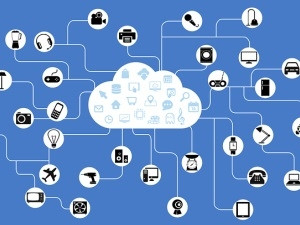Johannesburg, 13 Aug 2015

The Internet of things (IOT) is the next big technological revolution. The big guns are invested and time is rife with potential. So, what is it? And why should you care?
What is it?
The IOT is not simply an accumulation of electronic devices, or 'things', connected to the Internet. It is, moreover, the communication between such devices and the resulting wealth of actionable data. It is a real-time conglomerate of sensors accessible through a network.
The ultimate example of the IOT is the cellphone; over a billion online devices measuring an incredibly complex thing, people, resulting in an abundance of data that is leveraged by business the world over, says Tyler Donaldson, Data Scientist at OLRAC SPS.
Why should you care?
The big guns are invested and driving the revolution. Over the past decade, connectivity, data storage and microprocessor technology has improved exponentially, culminating in a new generation of microprocessor development chips that have been designed with the IOT in mind by big players such as Intel, ARM and Texas Instruments. A number of cross-platform operating systems (OS) and common languages are being developed by big players such as Google, IBM, Oracle and Microsoft.
It will affect big industries.
In an article about Predictive Maintenance (1), back in May 2014, I touched on how, what is now referred to as the IOT, would revolutionise the automotive industry. Modern cars have over 100 sensors, feeding information into a central microprocessor. Soon, we will see these microprocessors going online, archiving information continuously to centralised data repositories. That abundance of data will be a goldmine for automotive companies that can then use it to develop and deploy central predictive models that score the data in real-time to determine the health of a vehicle, which is then communicated back to the vehicle and, ultimately, the driver, who can then take proactive measures. As the driver arrives at the optimally predetermined dealership, the dealer will already know exactly what is wrong with the vehicle. The business users will have a live dashboard of their fleet of vehicles summarising the health, usage and common modes of failure of each model of vehicle. This would allow directed, real-time decision-making, informed logistical optimisation and targeted marketing. Customer service, efficiency, revenue and product reliability will be maximised and costs minimised.
It will be open source, open opportunity.

The big players are invested and driving the IOT revolution. The catch is that by the very necessity of its design, it needs to be open source. The big players will either need to submit to open source, succumb to it or form a conglomerate. That is to say there needs to be a common set of languages that is openly available to all major platforms. It will be difficult to monopolise, and even devices that seemingly can derive little benefit from the IOT may be targeted simply for the collection of data to be sold to the highest bidder.
The potential lies in the data.
The big guns developing the hardware behind the IOT technologies may be sitting pretty, but they are simply the enablers. The real wealth, accessible to all, lies in the data. Just as social media has revolutionised marketing at large, the IOT revolution will revolutionise all aspects of business the world over. Having the data at your fingertips won't be enough, though. The key to success or failure, the key that will separate competition and the pinnacle of the IOT revolution, will lie in the ability to extract the value from this abundance of big data. A universal truth that has driven success at OLRAC SPS.
It is happening now.
Not only is it going to be big and far-reaching, but it is coming together now. Those who proactively lead the charge will also lead the reaping of the benefits and establish themselves and their reputation. According to Business Insider Intelligence (2), the number of devices connected to the Internet is projected to more than double, from 8 billion to over 18 billion, over the next three years; a conservative estimate among others, and just the beginning of an exponential growth curve.
The stage is set for the IOT to revolutionise technologies over the next five years. It will give rise to a wealth of data that will be leveraged by more than just technological companies. Intelligent systems of 'things' will emerge, and big data and real-time predictive analytics will be the order of the day.
1. http://www.itweb.co.za/index.php?option=com_content&view=article&id=134642%3APredictive-maintenance-So-what-and-where-to-next-&catid=71
2. http://www.businessinsider.com/growth-in-the-internet-of-things-2013-10
Share